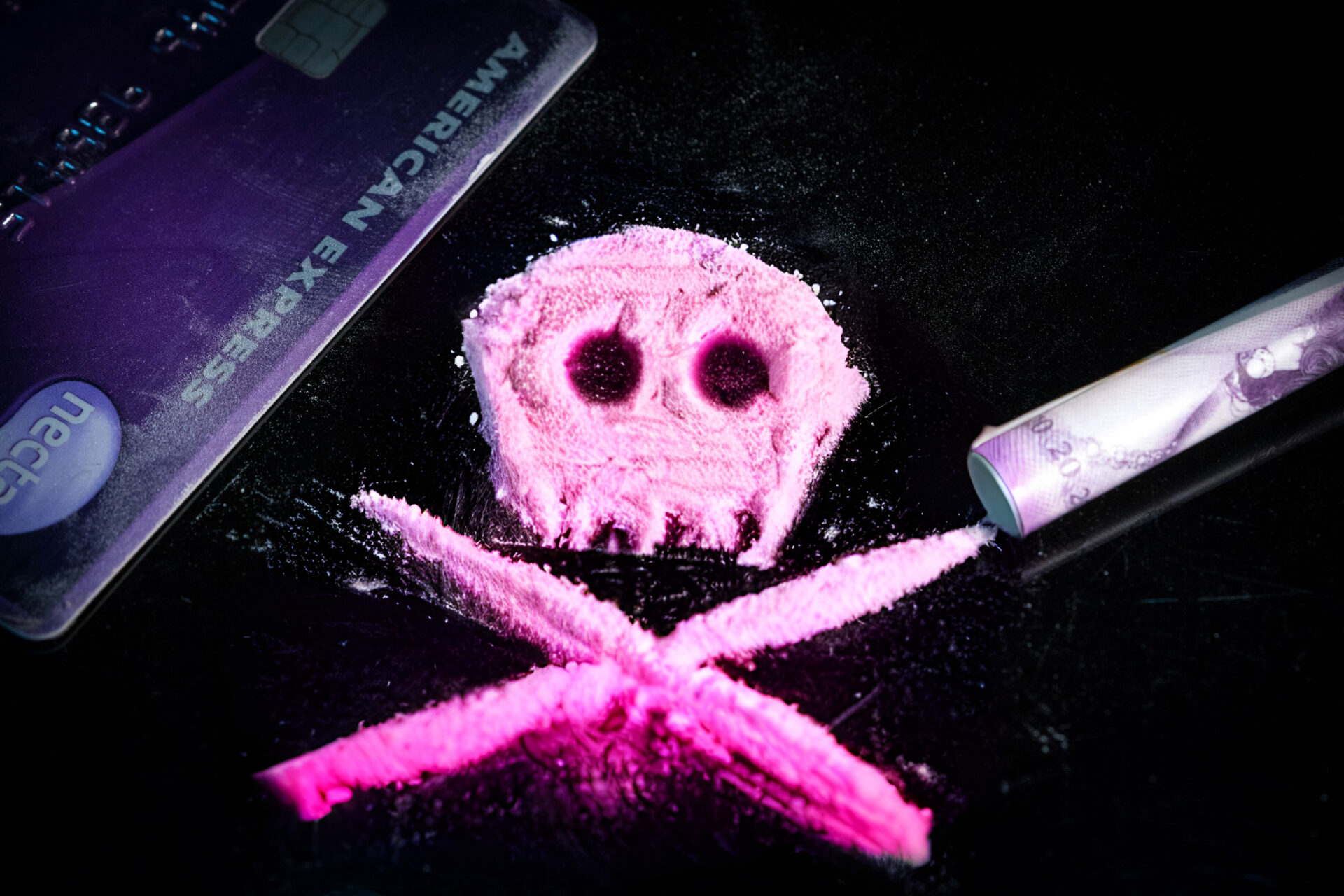The Rise and Risks of Pink Cocaine (Tusi): What You Need to Know

What is Pink Cocaine (Tusi)?
Pink Cocaine – also known as tusi or tusibi – was developed in Colombia in 2018 and promoted as an elite designer drug for the well-heeled. The street name ‘tusi’ refers to 2C-B which was sold in the ‘90’s as the recreational psychedelic ‘Nexus’. It acted as a combined stimulant and hallucinogen and was initially promoted as an alternative to XTC (MDMA). The drug’s popularity was short-lived, once users found it was a much weaker empathy-inducing agent than XTC, was remarkably painful to insufflate, and even at moderate doses was prone to inducing gastrointestinal problems, notably diarrhoea, nausea and flatulence.
Composition of Modern Pink Cocaine
Despite the name, the modern recreation rarely contains 2C-B and is a highly variable mixture of stimulants and sedatives, almost invariably ketamine with XTC, methamphetamine or cocaine and an opioid mixed with a pink food dye that gives it a pleasant strawberry odor. Other fillers are often included, including Benzodiazepines, New Psychoactive Drugs (such as N-BoMe ‘Bath salts’) and hallucinogens like LSD or mescaline.
The Effects and Duration of a Tusi High
Generally, the high peaks within 3 hours but may last up to 8 hours depending on composition. The drug induces excitement and euphoria, often raising sensory awareness. The side effects are likewise variable, invariably involving some level of dissociation from ketamine (which may lead to a frank psychotic break), short-term memory breaks, poor spatial memory, weird delusions and agitation.
Health Risks and Side Effects of Pink Cocaine
The drug mixture raises blood pressure and can lead to serious hypothermia. At higher doses, pink cocaine can induce seizures, and ketamine-associated abdominal cramping and bladder inflammation. Persistent effects include recurrent anxiety and depression as well as long-term recall problems.
Why Pink Cocaine is Especially Dangerous
The appeal of the drug is enhanced by the fact that many mixtures will not be detected with standard on-site screens. The stimulant/sedative combination is already dangerous. The uncertainty about exactly what is being taken makes it deadly.
Safework Health: A Leader In Workplace Drug Testing
If you require drug and alcohol testing solutions for your organisation, please feel free to contact us. Since 2012, Safework Health has delivered quality occupational health services aimed at keeping Australian workplaces safe and healthy.
At Safework Health, we provide comprehensive drug and alcohol testing services .These include urine drug testing, oral fluid (saliva) drug testing, alcohol testing and hair follicle drug testing.

Meet The Author
Dr Phil Tynan, National Toxicologist
Dr Tynan, a distinguished Toxicologist and a retired Clinical Biochemist Pathologist, brings a wealth of industry knowledge and experience. He is considered an expert in testing for substances of abuse.
Dr Tynan primarily supports Safework Health in developing new drug assays and procedures. He also offers guidance to clients and expert clinical advice as needed.
Dr Tynan is a published toxicologist in internationally peer-reviewed journals and is available to provide advice and expert opinion regarding results, expert witness testimony and appearances at courts and tribunal hearings.
